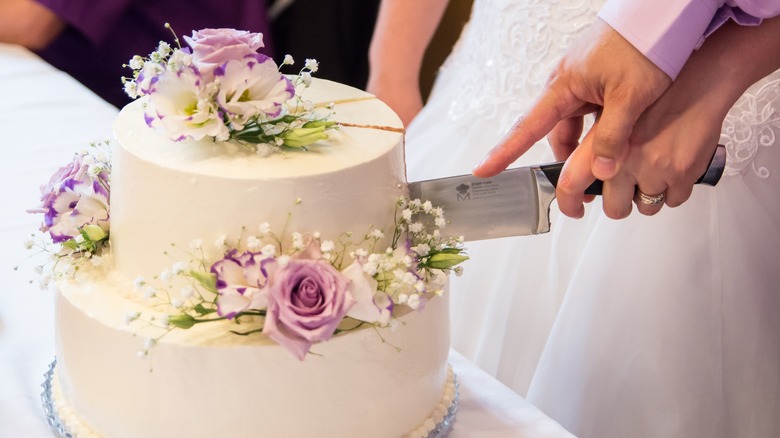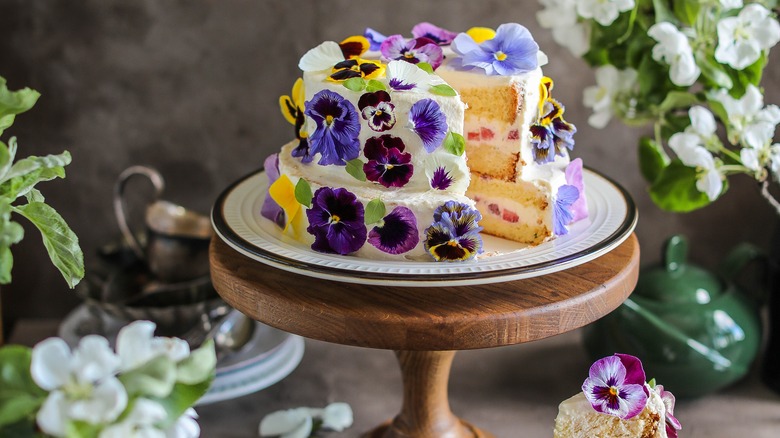How To Safely Crystallize Flowers For Your Own Dazzling Layer Cake
You've mastered the art of piping a rad rosette and perfected your creme pat. Now's the time to elevate your cake decoration game and scale the skill of making edible crystallized flowers. Now, while this may sound like something only a professional baker could pull off, the process is relatively simple. Plus, the pretty results are beautifully arresting.
To get started, select your edible flowers of choice. Anything from purple violas, pink pansies, and orange calendulas will work, depending on the color palette you're going for. The upshot of using these common variety flowers is that they grow in a spectrum of hues, which means you can easily match them to your frosting or select an option that complements your icing. Plus, these flowers have a small footprint so they'll easily fit on a small tiered cake to an upscale lavish one. If you're after more of an elegant look, then bigger, impactful flowers, like dahlias and roses are just the ticket but they will take longer to crystallize (always double check that any flowers you choose are safe to eat).
The next step is to coat your washed and dried edible flowers in a thin layer of egg white using a fine painting brush with a delicate hand. Then sprinkle a touch of sugar over the surface so the granules can stick to the egg white. Gently place your flowers on a paper towel or wire rack to dry thoroughly (this can take up to a day).
Crystallized flowers can last up to a year
While you could use fresh edible flowers to decorate a tiered cake, crystallized flowers last longer (up to a year) and won't wilt as they sit. Better yet, the crystallization process means you can preserve them days in advance (making sure to pick only the freshest and prettiest petals to feature on your showstopping cake), almost freezing them in their vibrant state while they're in season. What's more, crystallized flowers taste sweet and lend your cake a floral fragrance and flavor. Inedible artificial flowers, on the other hand, are guaranteed to look fantastic but you'll have to remove them from your cake before cutting it, which can be annoying when you've spent hours making everything look uber-fancy and inviting.
Once you've crystallized your flowers (or even individual petals) and placed them on your tiered cake, you might like to add a touch of food-safe greenery to lend your finished gateaux an impressive flourish. You can safely use clover, olive leaves, and even rosemary. Indeed, the aroma of rosemary pairs well with a cake featuring a lemon filling, as does lavender (consider sprinkling them with edible luster dust to lend them a reflective shine).
As always, avoid giving foods that feature raw egg whites to breastfeeding women, children, and the elderly. However, if you're worried about the risk of salmonella you could always use pasteurized egg whites, which are rapidly heated to destroy bacteria.

